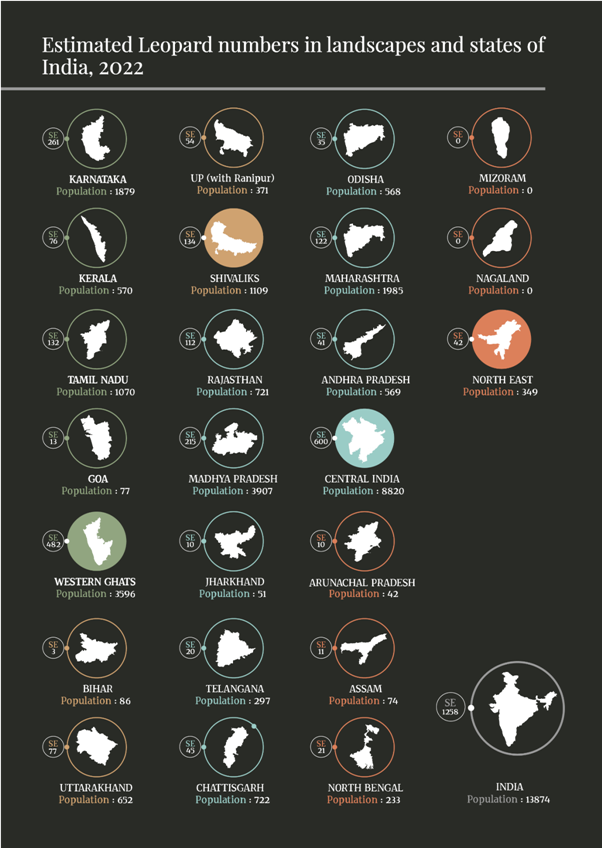These Are Key Findings of Fifth Cycle Leopard Population Estimation; This State Harbours Largest Population of Big Cats
Union Minister for Environment, Forest and Climate Change, Bhupender Yadav released the report on Status of Leopards in India, on 29th February, 2024 at New Delhi.
The fifth cycle leopard population estimation was carried out by the National Tiger Conservation Authority and Wildlife Institute of India, in collaboration with State Forest Departments, as part of “Monitoring of Tiger, Co-predators, prey and their habitat” exercise in tiger range States. This exercise has proved invaluable to the conservation efforts of the country.
Key Findings
India's leopard population is estimated at 13,874 (Range: 12,616 – 15,132) individuals, representing stable population. This estimate represent population of 70% of leopard habitat, the Himalayas and semi arid parts of country which are not tiger habitat were not sampled.
Central India shows a stable population
Central India shows a stable or slightly growing population of leopards (2018: 8071, 2022: 8820), Shivalik hills and Gangetic plains experienced decline (2018: 1253, 2022: 1109). If we look at the area which was sampled both in 2018 and 2022 across India, there is a 1.08% per annum growth. In Shivalik hills and Gangetic plains, there is a -3.4% decline per annum, while the largest growth rate was in Central India and Eastern Ghats of 1.5%.
Madhya Pradesh houses largest population of leopards
Madhya Pradesh houses the largest population of leopards in the country – 3907 (2018: 3421), followed by Maharashtra (2022: 1985; 2018: 1,690), Karnataka (2022: 1,879 ; 2018: 1,783) and Tamil Nadu (2022: 1,070; 2018: 868). Tiger Reserves or sites with highest leopard population are, Nagarajunasagar Srisailam (Andhra Pradesh), followed by Panna (Madhya Pradesh), and Satpura (Madhya Pradesh).
Critical role of Protected Areas in conserving leopard
The findings underscore the critical role of Protected Areas in conserving leopard populations. While tiger reserves serve as important strongholds, addressing conservation gaps outside protected areas is equally vital. Rising incidents of conflict pose challenges for both leopards and communities. Since leopards’ survival outside protected areas is equally important, collaborative efforts involving government agencies, conservation organizations, and local communities are essential to enhance habitat protection and mitigate human-wildlife conflict.
Leopard is an enigmatic animal which evoke reverence and is facing escalating threats across their range in India. Amidst habitat loss, human-wildlife conflict, and poaching, the National Tiger Conservation Authority (NTCA) spearheaded the fifth cycle of leopard population estimation, shedding light on the status and trends of these elusive big cats.
Spanning tiger range States and encompassing diverse landscapes, the comprehensive survey employed robust scientific methodologies using technology to assess leopard abundance. Through a meticulous process combining camera trapping, habitat analysis, and population modeling, the study revealed crucial insights into leopard distribution and conservation challenges.
Conservation legacy expands beyond tigers: Union Minister
Union Minister for Environment, Forest and Climate Change, Bhupender Yadav said ‘Project Tiger's conservation legacy expands beyond tigers, evident in the leopard status report, showcasing broader species protection efforts. The report emphasizes conservation commitment beyond protected areas, lauding the Forest Department's dedicated efforts. Project Tiger's inclusive approach underscores ecosystem interconnectedness and diverse species conservation.







Comments
Post a Comment